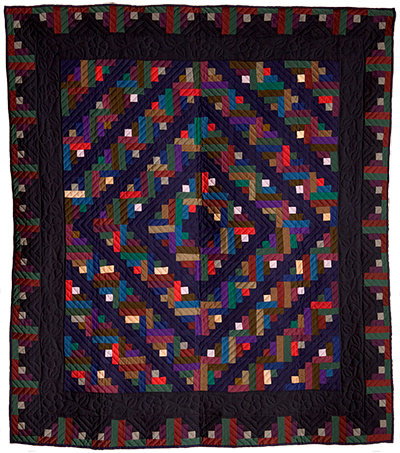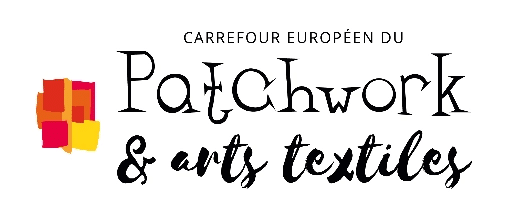The origin of the Amish patchwork
In France, patchwork is often confused with quilting, and its origins are easily attributed to the Amish. But these are really two different sewing techniques, each responding to a different need or desire. Both date back hundreds and even thousands of years.
We’re here to tell you more about the difference between patchwork and quilting.
At the end of the 19th century in the United States, the Amish discovered the art of quilting through contact with “English” peasant women. The Amish never make appliquéd quilts for themselves, considering them too “mundane”. It is possible, however, to find them in Amish stores, but only for tourists. These are still hand-quilted, pieced and quilted with either wool or cotton flannel (for the old-timers) or batting since around the 1950s.
Quiltmaking as a tradition
Creating a bedspread decorated with carefully hand-stitched patterns, that is to say, a quilt, requires a lot of patience and a lot of work.
Oftentimes, for the Amish originally and nowadays for the many associations who practice quilting around the world, a quilt is the result of a collective work reuniting several women of the community, especially for stitching.
Traditionally, a quilt will be made for special occasions such as a wedding (with the famous double wedding ring pattern) or to celebrate a new birth with a baby quilt.
A bride-to-be should know how to make at least one of the three types of wedding quilts.
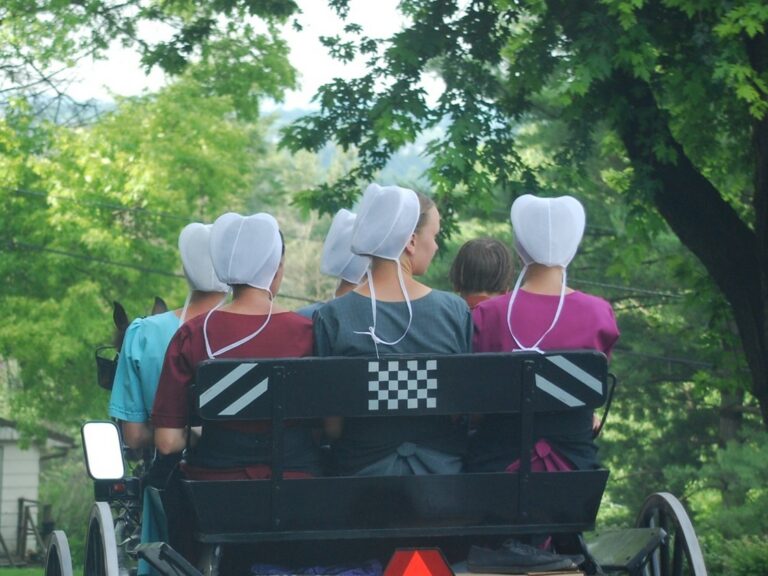
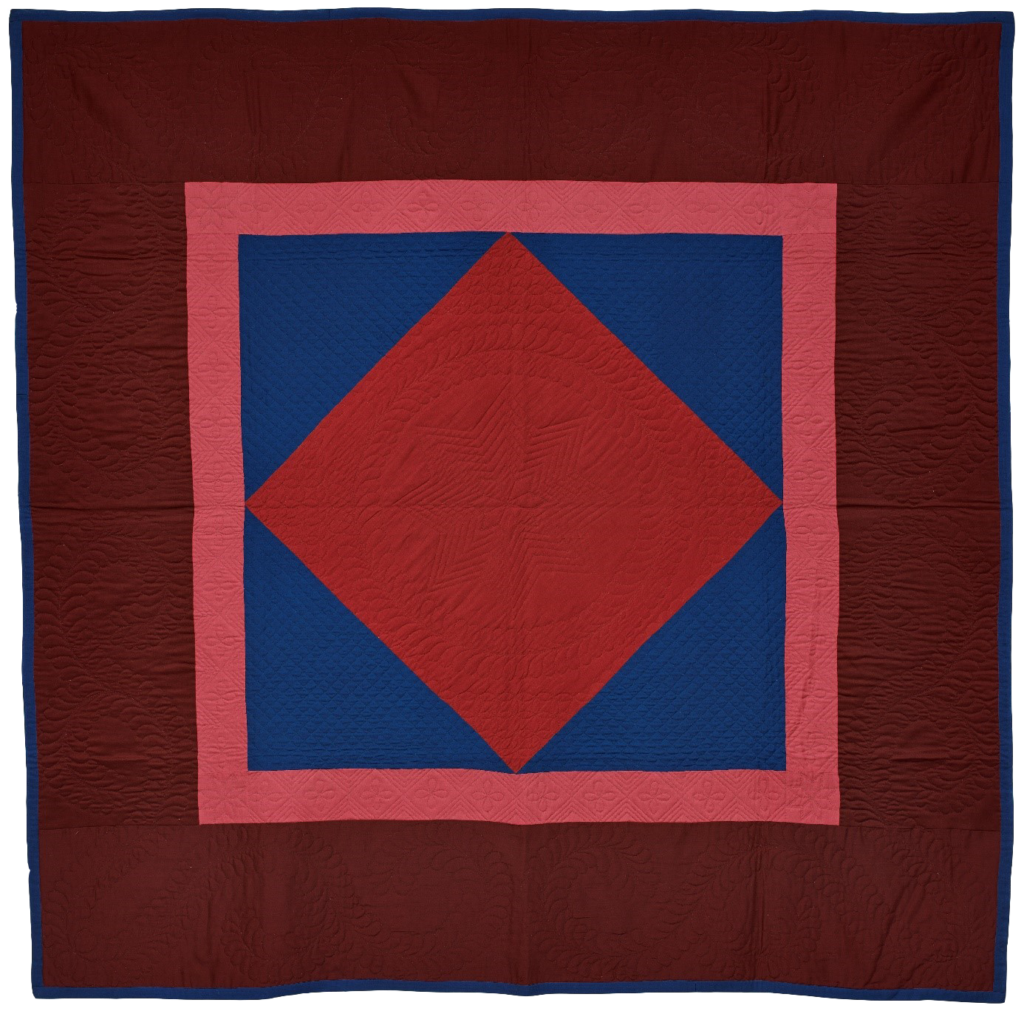
How to recognize an Amish quilt
The primary characteristic of an antique Amish quilt is that it’s made with fabric scraps from Amish garments. A true Amish quilt is easily recognized by its solid colors, as printed fabrics are never used. Even today, garments are made in Amish thatched cottages, and scraps are carefully preserved, often for years.
For religious reasons, the Amish never depict faces, animals or any figurative form as prescribed in the Bible: “You shall not make for yourself a graven image” (Exodus 20:4). Instead, they focus on the beauty and complexity of geometric patterns and color combinations.
Traditionally, the wedding is always the occasion to make three quilts for the girl and two for the boy: “this is normal, since the bride-to-be makes one herself, the other two being made by sisters, aunts and cousins”, according to Ida Miller, in Indiana. The colors are often dark, but also light, depending on the origin of the clothes: grandmother’s or young girl’s. The many births are an opportunity to make Crib Quilts.
Co-founder of the European Patchwork Meeting, Jacques Légeret describes these patchworks in greater detail in his book (in French) “ Les Amish et leurs quilts, Passé-Présent”, Edisud, Aix-en-Provence, 2006.
Famous patterns for Amish quilts
Amish quilt patterns are based on geometrical figures: squares, triangles and diamonds. The pieces of cloth are then put together in endless combinations of various shapes, sizes and colors.
Tenths of patterns can be found in traditional Amish quilts.
Here are some of the most famous ones.
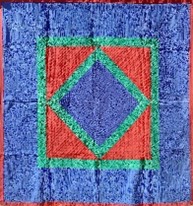
Center Diamond
The best known, often made for weddings as early as the 1910s.
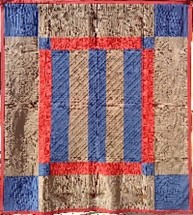
Bars
Furrows, like in the fields.
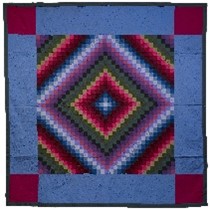
Sunshine and Shadow
A play on dark and lighter patches. This pattern is widely used among beginners.
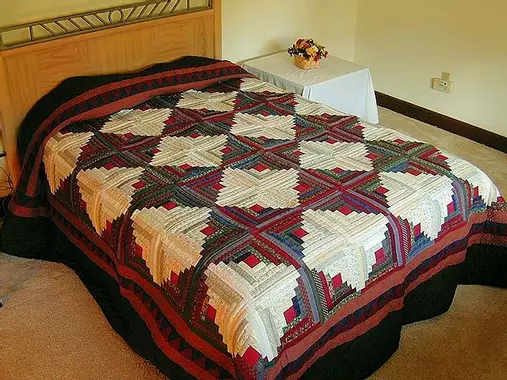
Log Cabin
It is one of the most common and well-known patterns.
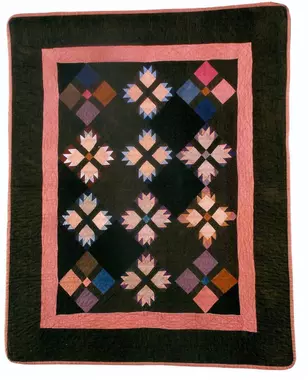
Bear Paw
Inspired by a bear’s paw.
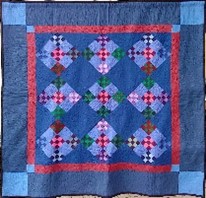
Double Nine Patch
Each square is made up of nine squares.
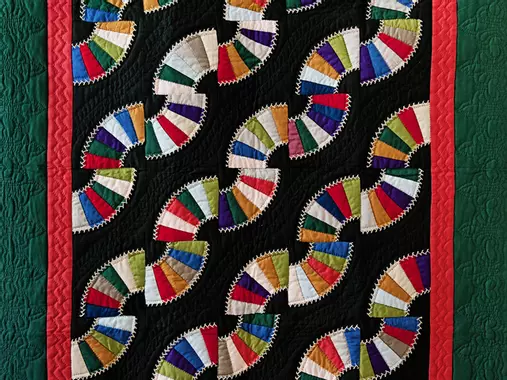
Fan
A pattern looking like a fan.
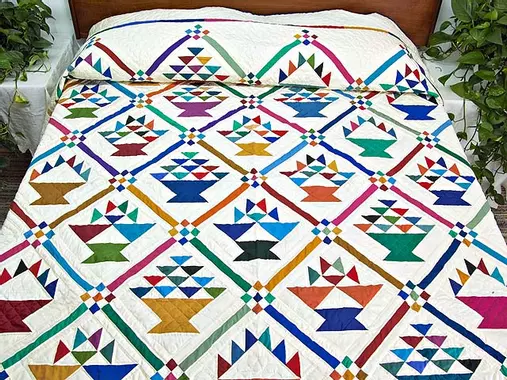
Baskets
Baskets are a reference to a simple farming life.
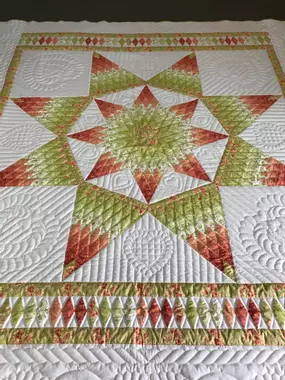
Broken Star
Representing the Star of Bethlehem, this pattern can be found in many shapes, some very complicated in the making.
Quiltmaking and patchwork as arts
Amish patchworks and quilts are famous for their beauty and their complexity, through the USA and around the world. They widely contributed to spreading these needlework techniques. The most beautiful and most complicated works are regarded as true pieces of art.
However, the Amish do not necessarily consider making quilts and patchworks as a form of art. According to their religious and traditional way of life, only God can create beauty.
Patchwork and quiltmaking have evolved with the current times, along with trends and fashion. Whether it’s regarded as a decorative craft, a hobby or a true art, patchwork is definitely a way to express yourself creatively!
By visiting fairs such as the European Patchwork Meeting, you can discover pieces of textile art that have had an impact on various techniques along the years: patchwork, embroidery, dyeing, lacemaking…
Attend our event to meet up with professionals, experts and lovers of the textile arts!
